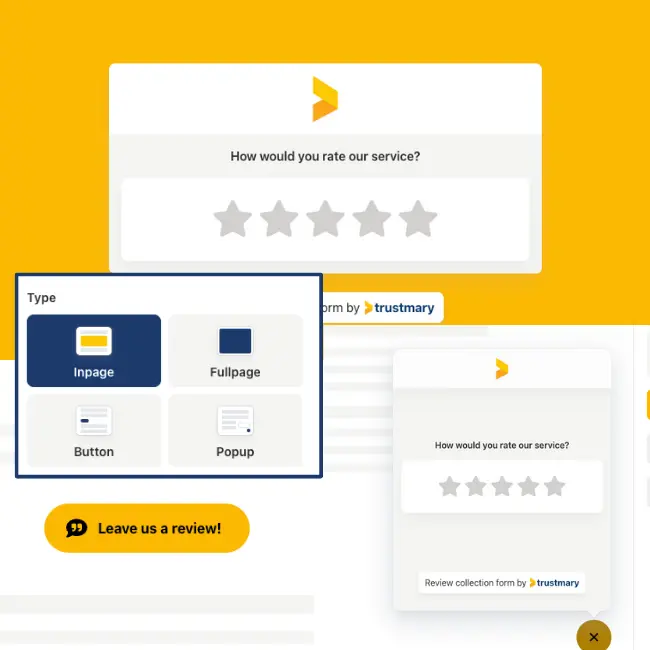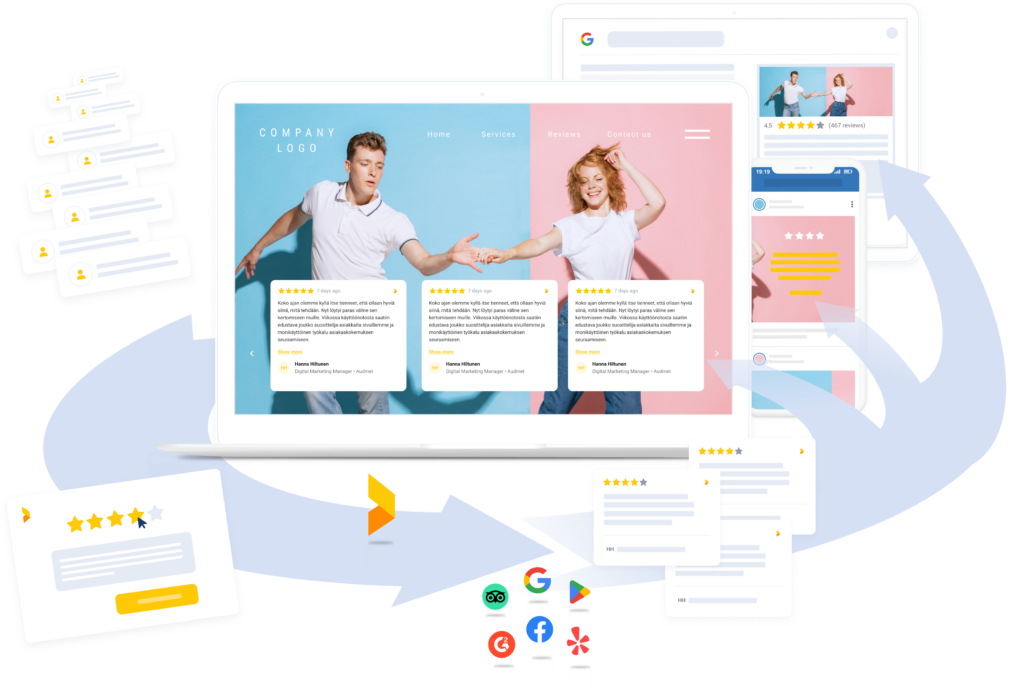Basics of Employee Satisfaction Surveys


Employee satisfaction surveys are a vital tool for gauging workplace satisfaction, identifying areas for improvement, and fostering company's culture.
I'll cover the essentials of employee surveys, from data collection to actionable insights, and offer strategies to increase survey participation rates.
From Data Collection to Actionable Insights
Defining Survey Objectives
Before conducting an employee satisfaction survey, it’s crucial to establish clear objectives.
What do you aim to discover?
Common goals include
- Assessing job satisfaction,
- Understanding employee engagement
- Identifying areas for workplace improvement
- General employee experience and satisfaction levels
- Measure how employees rate their professional skills
- Wishes for career development
Clear objectives guide the design and focus of your survey questions.
Note that these are key themes for separate satisfaction surveys.
Adding all these employee satisfaction survey questions to one survey will lead to a very low survey completion rate.
Designing Effective Surveys
An effective survey is both comprehensive and concise. Include a mix of question types:
- Multiple-choice and rating scales for quantitative data.
- Open-ended questions for qualitative insights.
- Likert scales to measure attitudes and opinions on a gradient.
Ensure questions are clear and directly related to the survey’s objectives. Avoid leading questions that may bias responses and keep the survey length manageable to prevent respondent's survey fatigue.
Selecting the Right Platform
Choose a survey platform that offers anonymity, a user-friendly interface, and robust analytics.
Anonymity is crucial for honest feedback, while intuitive interfaces ensure higher completion rates.
Data Collection
Distribute your survey through multiple channels such as email, company intranets, and direct links. Timing is important; avoid busy periods to increase the likelihood of participation. Providing a clear explanation of the survey’s purpose and how the results will be used can motivate employees to participate.

Analyzing Survey Data
Once data is collected, use the survey platform’s analytics tools to identify trends and key insights. Look for patterns in responses that highlight strengths and areas for improvement. Segregate data by department, role, or tenure to gain a more nuanced understanding of different employee groups.
Developing Action Plans
Turn insights into actionable steps. Share survey results with the entire organization and outline specific action plans addressing identified issues. For instance, if feedback indicates low satisfaction with work-life balance, consider implementing flexible working hours or remote work options.
How to Increase Employee Survey Participation Rates
At Trustmary, our CEO Johannes sends us an automated eNPS survey monthly.
It's a great way to keep updated on job satisfaction, and to avoid survey fatigue as the survey is regular, but not sent too often.
Here are some future tips on getting more responses to your own survey.
Communicate the Purpose
Clearly communicate the purpose of the survey and how the feedback will be used to improve the workplace. Transparency builds trust and encourages employees to share their honest opinions.
Ensure Anonymity
Guarantee that responses are anonymous to alleviate concerns about confidentiality. Employees are more likely to provide genuine feedback if they know their responses cannot be traced back to them.
Communicate this as well!
If you want to know how employees feel, make sure survey responses are in fact anonymous responses.
Offer Incentives
Offering incentives such as entry into a raffle or small rewards can boost participation rates.
Ensure that these incentives are communicated clearly when distributing the survey.
The best incentive is to promise to act on results.
That may encourage a dissatisfied employee to tell you what they think.
Optimal Timing and Distribution
Choose an optimal time for distribution, avoiding busy periods or major project deadlines.
Use multiple communication channels—email, internal newsletters, and team meetings—to remind employees to complete the survey.
In fact, try sharing the survey in a common meeting as a QR code survey on your slides, and reserve 5 minutes for answering.
Conducting employee satisfaction surveys doesn't need to be overly difficult.

Keep it Short and Simple
While it’s important to gather comprehensive data, keeping the survey short and to the point can prevent survey fatigue.
Aim for a balance between thoroughness and brevity.
If your goal is to find out how people's work life balance is, only ask about that.
Don't add too many questions.
Staff satisfaction survey questions should focus 100% only on job satisfaction and possibly company culture.
Follow Up & Do Regular Satisfaction Surveys
After the survey is completed, follow up with the respondents.
Share key findings and outline the steps the organization will take based on their feedback. This demonstrates that their input is valued and leads to higher engagement in future surveys.
And make it a habit.
Using Trustmary for Employee and Customer Feedback
Trustmary provides an all-in-one feedback and review management platform to manage both employee and customer feedback efficiently.
Here’s how you can leverage Trustmary to streamline your feedback processes:
Employee Surveys with Trustmary
- Survey Creation: Easily create customized employee surveys with Trustmary’s intuitive interface. Use various question types, including multiple-choice, star rating scales, and open-ended questions.
- Anonymity and Confidentiality: Ensure employee anonymity to promote honest feedback.
- Get testimonial and video testimonials from employees: Even when you offer the chance of anonymity, also offer the chance to leave a review or video review. These can help boost your employer brand.
- Automated Distribution: Schedule and distribute surveys via email, SMS, or other communication channels.
- Real-time Analytics: Access real-time analytics and generate comprehensive reports to identify trends and actionable insights.
- Action Plans: Develop and implement action plans based on survey results. Share these plans with employees to show that their feedback is being acted upon.
Collecting Customer Feedback
- Testimonial Collection: Gather customer testimonials easily through automated requests. Use these testimonials to build trust and enhance your brand’s reputation.
- Video Testimonials: Collect and showcase video testimonials to add a personal touch and authenticity.
- Net Promoter Score (NPS): Measure customer satisfaction using NPS surveys. Identify promoters, passives, and detractors to better understand customer sentiment.
- Feedback Management: Centralize all customer feedback in one place. Analyze feedback to improve products, services, and customer experience.

Ensure Positive Work Environment
Employee surveys are an essential tool for understanding and improving workplace satisfaction.
By following best practices in survey design, data collection, and analysis organizations can gain valuable insights and develop actionable strategies to enhance employee engagement and satisfaction.
Ensuring high participation rates through clear communication, anonymity, and incentives will provide more reliable data, leading to more effective organizational improvements.
With Trustmary, you can seamlessly manage both employee and customer feedback, leveraging powerful tools and analytics to drive continuous improvement and foster a positive organizational culture.
Drive satisfaction by making employees feel appreciated. It also helps if you share customer feedback internally. It makes every individuals' work visible, and can be a real motivation boost. You'll end up creating a positive work environment as a result.
FAQ
Why are employee surveys important?
Employee surveys help organizations understand the sentiments of their workforce, identify areas for improvement, and enhance overall employee satisfaction and engagement.
How can I ensure high participation rates in employee surveys?
To increase participation rates, clearly communicate the survey's purpose, ensure anonymity, offer incentives, distribute surveys at optimal times, keep them concise, and follow up with actionable results.
What types of questions should be included in an employee survey?
Include a mix of multiple-choice, rating scales, and open-ended questions. Focus on job satisfaction, work-life balance, career growth, and company culture. Personal growth is also a theme to focus on.
How can I analyze survey data effectively?
Use survey platforms with analytics tools to identify trends and insights. Segregate data by different employee groups for a nuanced understanding, and develop action plans based on these insights.
How can Trustmary help with employee and customer feedback?
Trustmary is the best online survey tool for creating and distributing surveys, ensuring anonymity, analyzing feedback in real-time, and developing actionable insights. It also supports collecting and showcasing customer testimonials, including video testimonials and NPS surveys.